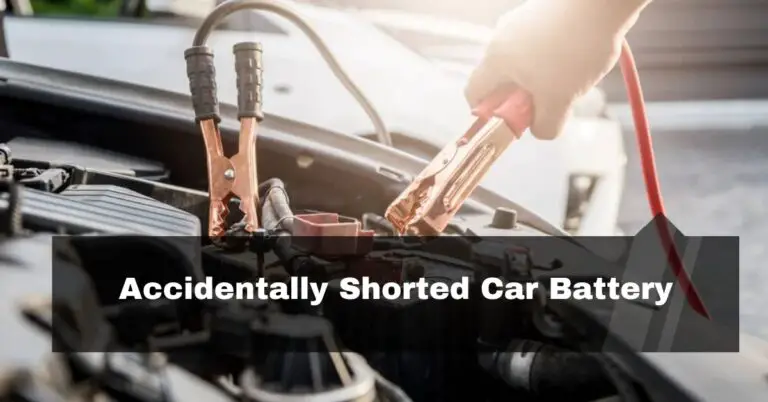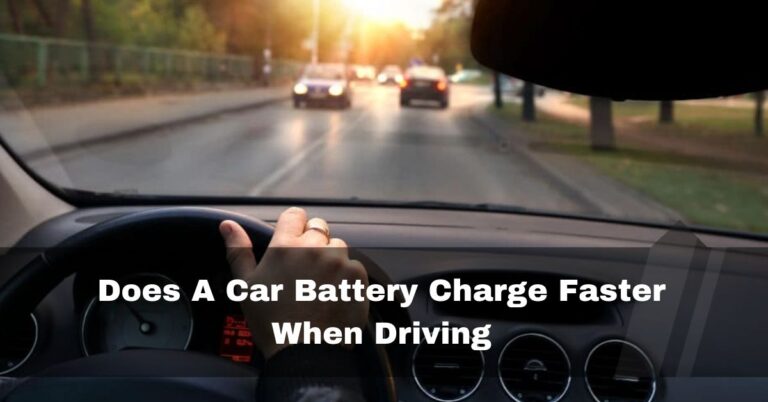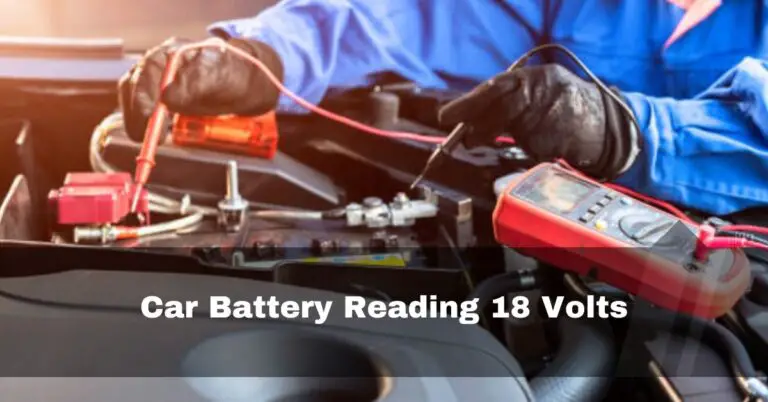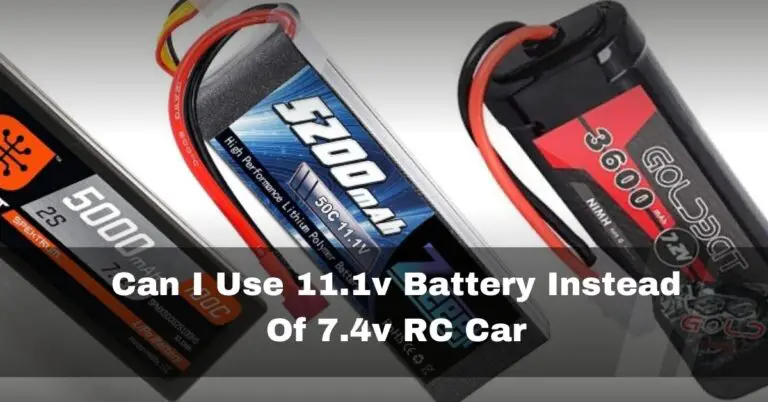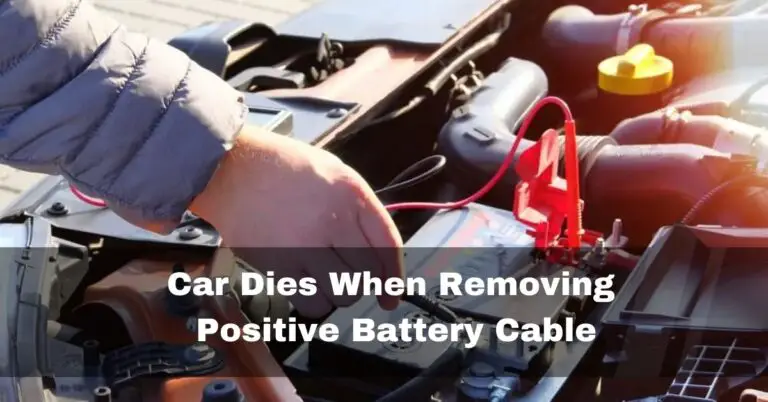Is 15 Volts Too High For Car Battery – Yes Or No – 2023
Your automotive battery’s health and longevity depend on proper voltage maintenance. Whether a voltage of 15 volts is too high for a car battery is a widespread worry among automobile owners.
Yes, 15 volts is too high for a car battery. It indicates overcharging, which can damage the battery and other electrical components.
In this article, we will explore whether 15 volts is too high for a car battery and discuss the potential causes and fixes if such a situation arises.
Table of Contents
The Ideal Voltage Range:
Car batteries have a specific voltage range in which they are intended to function. When the engine is operating, the alternator in your car typically keeps the battery voltage at 13.8 to 14.7 volts. This voltage range is ideal for the health of batteries.
Any departure from this range may result in a number of problems, such as overcharging, gassing, and probable battery damage.
The Consequences Of 15 Volts:
As previously known, a voltage of 15 volts is over what is advised for a car battery. Several issues can occur when a car battery is exposed to such high voltage:
1. Gassing:
When a battery is overcharged, a chemical reaction known as gassing occurs in the electrolyte. The hydrogen and oxygen gases produced from this reaction have a significant potential for explosion. Gassing can eventually result in the electrolyte’s water content being reduced, severely harming the battery.

2. Plate Damage:
The battery plates may be damaged by excessive voltage. The plates may become flaky or warped due to this damage, which may lower the battery’s capacity and shorten its lifespan.
3. Heat Generation:
The battery may become overheated as a result of overcharging. In addition to being inefficient, a battery that is too hot can be dangerous and cause explosions.

Why Does Car Battery Showing 15 Volts? Exploring The Top Causes:
1. Problem With The Alternator:
An essential part of your car’s electrical system, the alternator charges the battery while the engine operates. If it breaks down, overcharging may occur, producing excessively high voltage levels that could harm the battery and other electrical parts.
2. Shorting Cell In The Battery:
A shorting cell in a car battery can be a problematic problem, disrupting its regular operation and frequently leading to high voltage readings and overcharging. It happens when one of the battery’s cells experiences an internal short circuit.

3. Bubbles Formed On Battery Plates Due To Overcharging:
When the charging voltage exceeds the battery’s capacity, overcharging is a severe problem. The battery’s health is at risk due to the production of gas bubbles on the battery plates due to this excessive charging, which can also cause abnormal voltage readings.
4. Faulty Voltage Regulator In The Alternator:
The voltage regulator is essential for regulating the alternator’s output voltage. When this component breaks down, it may result in excessive voltage output, which could harm the battery and other electrical systems.

5. Fault In The Charging System’s Voltage Regulator:
A malfunction in the voltage regulator or related circuits of the charging system might result in inconsistent voltage output from the alternator, raising voltage readings and perhaps damaging the vehicle.
6. Attempted Charging Of A Bad Battery:
Due to the battery’s inability to receive a charge properly, higher voltage readings can occur when the alternator tries to charge a badly damaged or sulfated battery.
7. Problematic Batteries:
Some batteries, especially those that are older or damaged, can have uneven voltage patterns, which cause the voltage readings to be higher.

8. Topping Up Electrolyte:
When a battery is overcharged, the electrolyte inside emits gas, which might lower the electrolyte level. Over time, this can result in the battery’s performance being harmed.
How To Fix Car Battery Showing 15 Volts? Try These Easy Fixes:
1. Examine The Alternator:
- Start by guaranteeing your safety. To avoid electrical mishaps, unplug the vehicle’s battery.
- Check the alternator carefully for any obvious evidence of damage, frayed wires, or odd noises. Look for frayed wires in the wiring harness.
- Ensure that the belt that drives the alternator is securely fastened and is not slipping. A loose or broken belt can affect the alternator’s performance.
- Measure the voltage output of the alternator using a multimeter. It should generally show between 13.8 and 14.2 volts at rest. A substantially higher value indicates overcharging.
- Perform a load test by turning on various electrical equipment, such as the air conditioner and headlights. Under increased load, the alternator ought to maintain a constant voltage output.
- If your observations indicate the voltage output is abnormally high or unstable, continue with the diagnosis.
- Replace or repair the alternator as necessary. Replace worn-out brushes or a faulty voltage regulator, for example, to solve minor concerns. If the alternator is seriously damaged, replace it.
- Connect the alternator to the vehicle’s electrical system once more, then reattach and secure it. Reconnect the battery, start the car, and check the voltage output using a voltmeter to ensure it is between 13.8 and 14.2 volts when the engine is running.
2. Replace Shorted Cell:
Unfortunately, there isn’t a workable solution for a shorting cell. The only option is to buy a new battery and replace the old one completely. This replacement is necessary to maintain the structural integrity of your car’s electrical system and guarantee consistent operation.

To ensure the best performance, choose a new battery that complies with your vehicle’s requirements in terms of size, type, and capacity. Even though this task doesn’t demand highly developed mechanical abilities, safety should always come first, and the manufacturer’s instructions should always be followed while replacing an item.
3. Inspect Overcharging:
To solve the overcharging and gas bubble formation issues with the battery plates. First and foremost, you must stop charging immediately to avoid overcharging further, which could worsen the problem.
Do a thorough inspection of the battery next. Keep an eye out for telltale indicators of overcharging, such as an increase in heat or a discernible drop in the battery’s electrolyte levels.
When gassing has stopped and the electrolyte levels have been impacted, carefully top off the battery’s electrolyte with distilled water.
Before adding the distilled water, gently rock the batteries to ensure gas bubbles are released and proper mixing occurs. It will prevent the negative consequences of overcharging, maintain the right electrolyte level, and protect the battery’s health.
4. Check Faulty Regulator:
Without a mechanic, use the following actions to repair a bad voltage regulator:
- Unplug the car’s battery to ensure safety and avoid any electrical mishaps.
- The voltage regulator is typically included in the alternator. Consult the service manual for your car for detailed instructions if you need to remove the alternator.
- The alternator should be unbolted from its installation and disconnected from the vehicle’s electrical system. For reassembly, keep track of the nuts and bolts.
- Depending on the alternator’s design, the voltage regulator may be changeable as a separate part. If so, carefully remove the previous regulator and replace it. Ensure proper installation, adhere to manufacturer guidelines, or consult the service manual.
- Connect the alternator to the vehicle’s electrical system once more, then reattach and secure it. Plug the batteries in. With the engine running, start the car and check the voltage output with a voltmeter to make sure it is within the typical range (about 13.8 to 14.2 volts).
5. Check The Charging System’s Voltage Regulator:
By following these procedures, you may solve problems with the voltage regulator and circuits of the charging system without hiring a professional:
- First, ensure your safety by unplugging the car’s battery to prevent electrical mishaps.
- Check the charging system’s wiring connections visually for any loose, corroded, or damaged wires. Make sure the grounding connections are correct.
- Look for any signs of damage to the fuses connected to the charging system. Any blown fuses should be replaced with similar-amperage ones.
- To check the voltage regulator’s performance, use a multimeter. For details on particular testing techniques, consult the service manual for your car. If the regulator is determined to be defective, replace it.
- Measure the output voltage of the alternator while the engine is running. Usually, it should show between 13.8 and 14.2 volts. If it drastically departs from this range, additional research is required.
- Repair or replace any defective wiring or components based on your diagnosis. Make sure all connections are stable and corrosion-free.
- Start the car, reconnect the battery, and put any parts that were taken apart back together. Verify using a voltmeter that the voltage output is within the expected range.
6. Battery Assessment:
- First, ensure you’re safe by removing the battery from the car.
- To determine the battery’s state, test it. Several car parts retailers provide battery testing services. Low voltage and diminished capacity are common indicators of a badly damaged or sulfated battery.
- Replace the batteries with a fresh, dependable unit appropriate for your car’s make and model if they are in poor condition. Make sure to choose the right type and size of battery.
- Install the new battery cautiously, ensuring the polarity and connections are vital.
- Start the car’s engine after reconnecting the battery. When the engine operates, monitor the voltage readings to ensure they stay within the typical range (between 13.8 and 14.2 volts).
7. Address Low Electrolyte Levels:
- Start by guaranteeing your safety; unplug the car’s battery to prevent electrical mishaps.
- Until all gassing has stopped, let the battery sit and rest. It is crucial to avoid any safety risks from hydrogen gas buildup.
- Rock the battery back and forth several times with caution. It ensures accurate electrolyte level measurement by assisting in releasing any gas bubbles that might be trapped on the battery plates.
- Add distilled water to the battery cells to restore the electrolyte level to the proper level. This level should typically be 10 to 12 millimeters (1/2 inch) above the top of the battery plates. Make sure to fill in the right amount.
FAQs:
1. Can You Charge A Car Battery At 15v?
If the battery is not fully charged, it is safe to charge a car battery at voltages higher than the gassing voltage. As long as the automobile battery is checked to ensure it isn’t overcharged, alternator and battery charger voltages can exceed 15V safely.
2. Should An Alternator Charge At 15 Volts?
Between 13.5 and 14.5 volts should be the output of a decent alternator. Turning on the radio, the air conditioning, and the headlights will stress test the alternator. When these circuits are turned on, the voltage should remain within the above range. Keep in mind that the engine must be running at a standstill.
3. How Do I Know If My Alternator Is Overcharging?
Reading on the voltage gauge in your vehicle’s instrument cluster that is too high is one of the most evident symptoms of alternator overcharging. Any value above 15 volts calls for additional inquiry, but readings noticeably higher than that raise serious concerns.
4. What Happens If The Car Battery Voltage Is Too High?
The battery is overcharged if the voltage is higher than 12.9V. It would help if you reduced some of the extra current because overcharging can harm a battery. It can be accomplished by briefly using the high beam setting on your headlights before re-testing your battery to ensure it is within the proper range.
5. What Voltage Is An Overcharged Car Battery?
Without adding a load (such as the air conditioner or lighting), the voltage will often increase to an average of 14 volts when the car is started. Overcharging is possible if the multimeter registers a reading greater than 14.8 volts.
6. How Do I Stop My Battery From Overcharging?
After the battery is fully charged, unplug chargers and rechargeable battery-powered gadgets. When a battery or other item is placed into a charger after it has reached full charge, overcharging takes place. It can shorten the lifespan of the battery.
Conclusion:
A car battery reading of 15 volts indicates possible issues with the automobile’s electrical system. These problems can be caused by an unreliable alternator, a cell that is shorting out, overcharging, broken voltage regulators, or troublesome batteries. A timely diagnosis and the right course of treatment are essential for maintaining the electrical health of the vehicle. Even though car owners with basic mechanical knowledge can perform some repairs, it’s crucial to emphasize safety and follow manufacturer instructions. When in doubt, get expert advice from a licensed mechanic.

